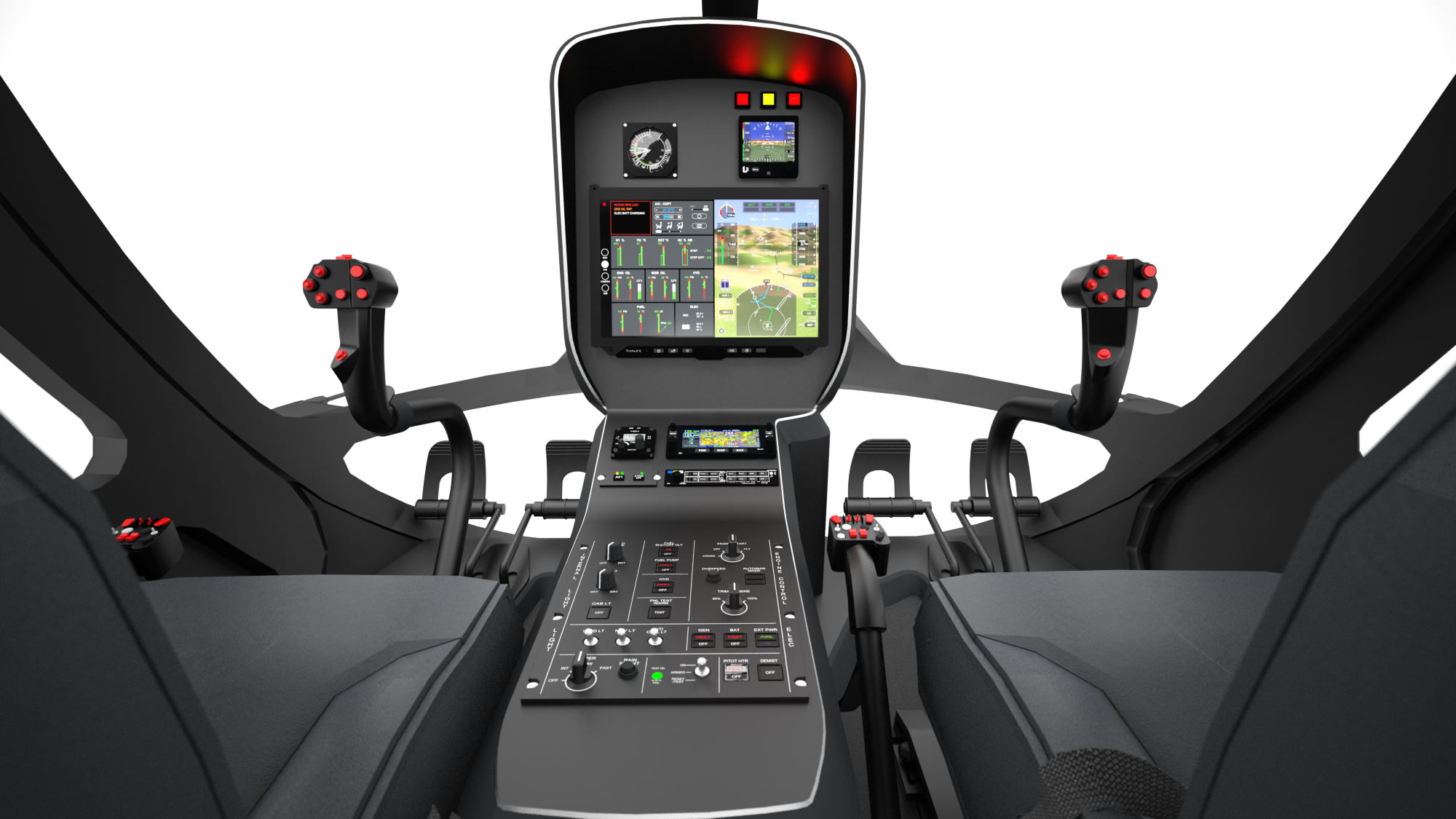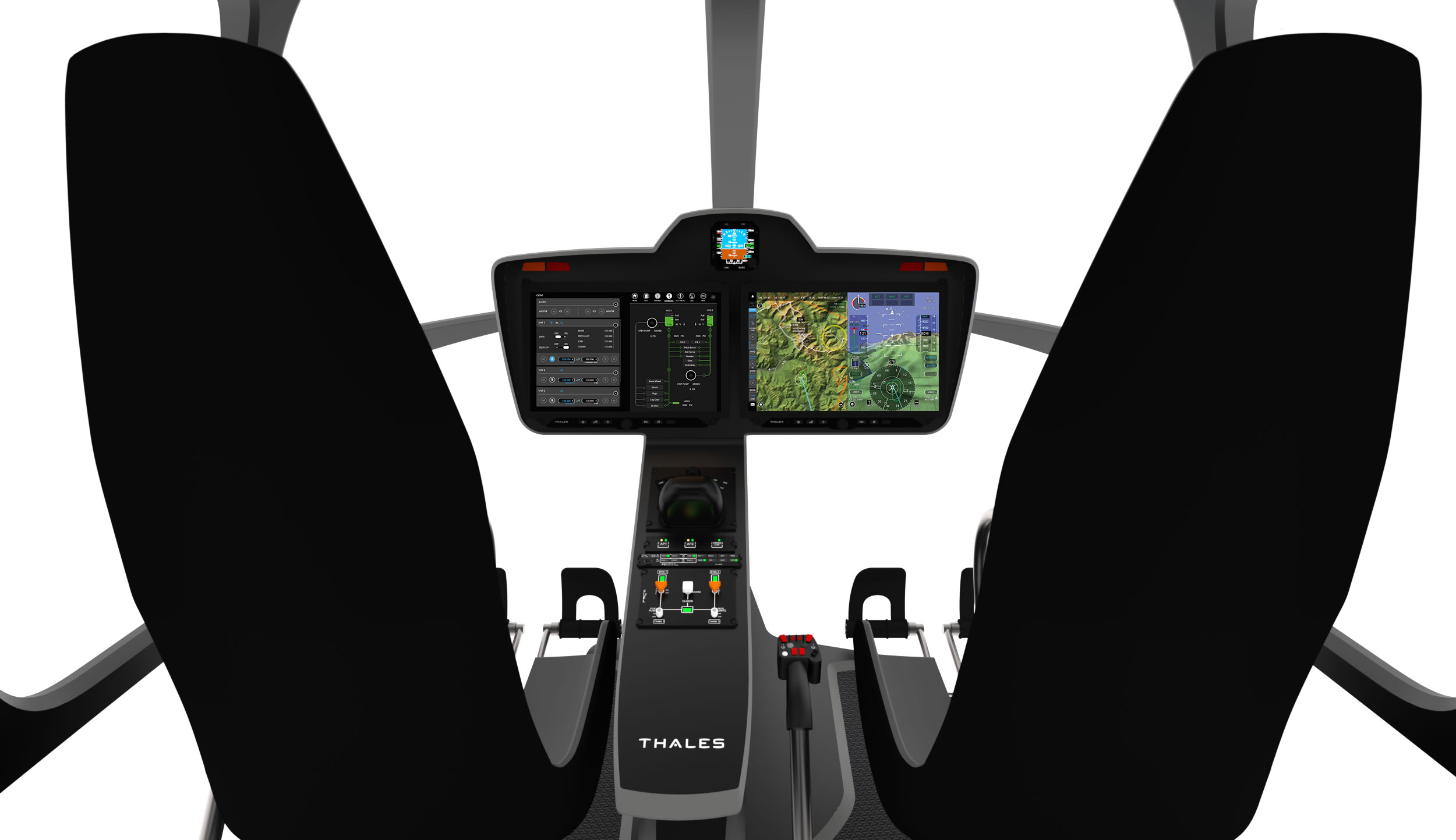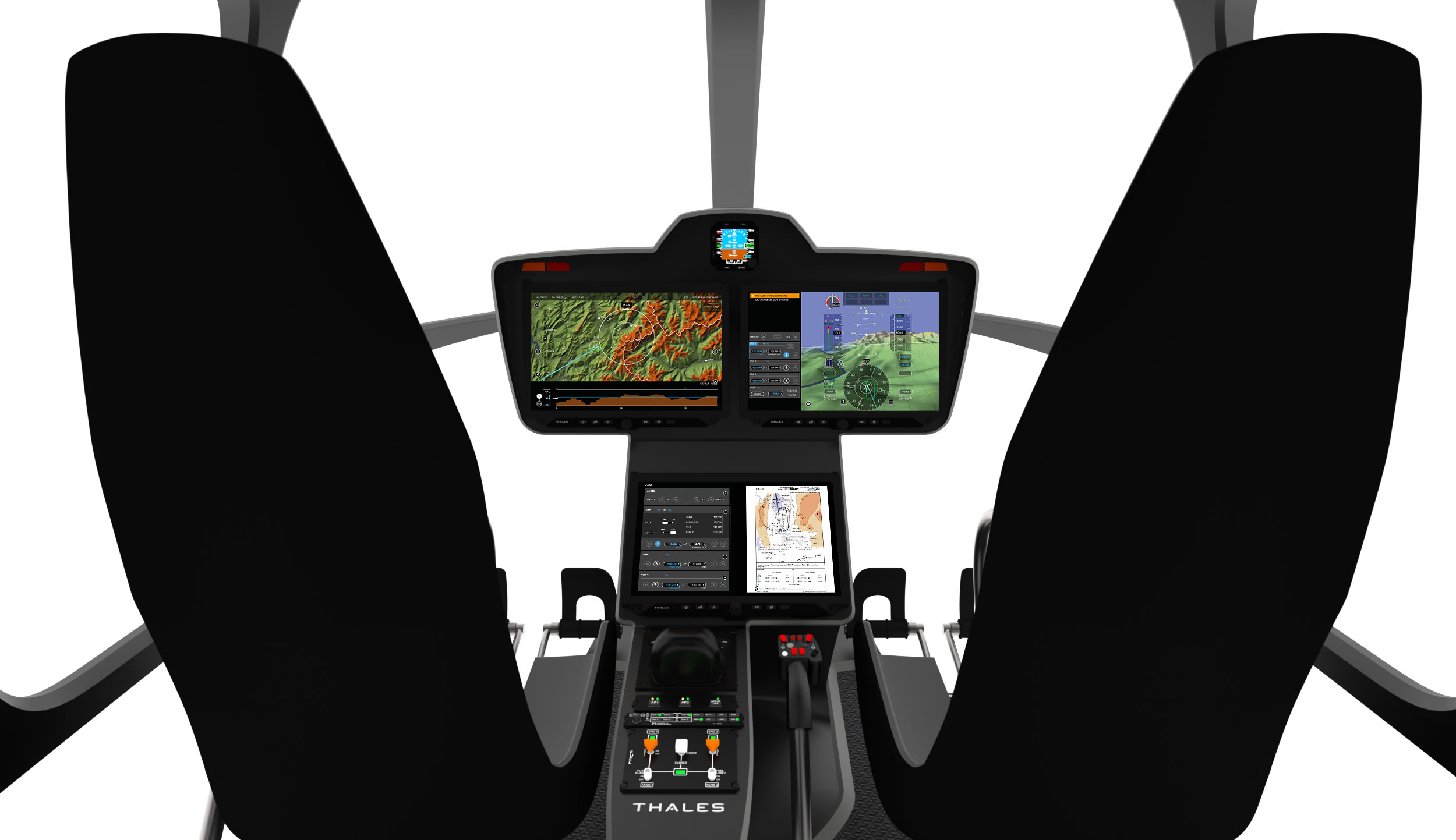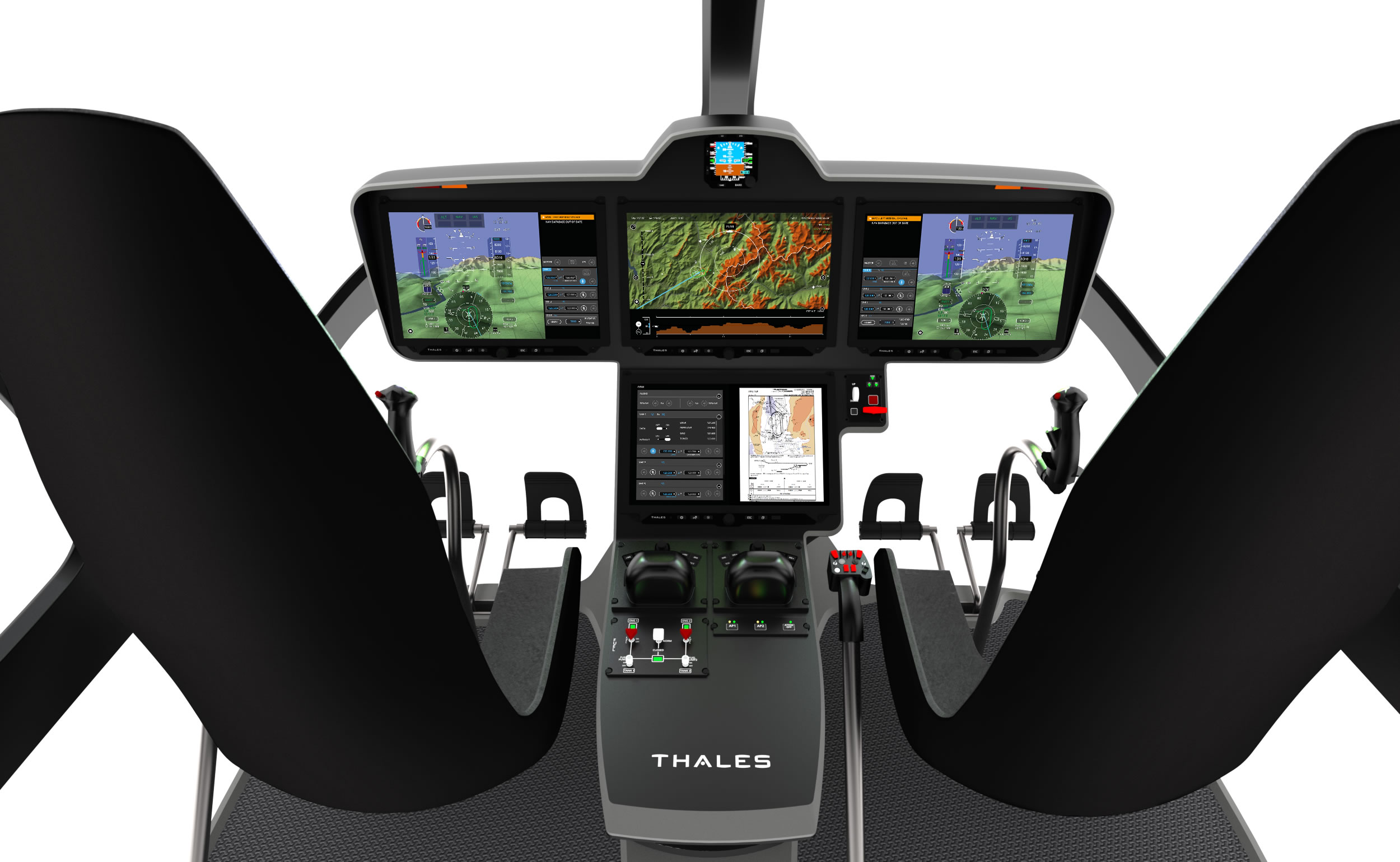Forget those dials and buttons: here’s a touchscreen for the skies
Think of it as the high-flying tablet!
Thales wants to give pilots the same user-friendly touchscreen interface as the tablets we use in our everyday lives, incorporating crew-centric solutions by design.
“With FlytX, the cockpit is designed to be intuitive, so you can focus on your mission and not on how you manage the equipment,” says Marc Gasiglia, Thales Head of Product Marketing, Integrated Avionics activity
That’s good news for all generations of pilots – up to and including the up-and-coming “natively digital” pilots – who appreciate touchscreen interactions and large displays. FlytX replaces the old-fashioned, clumsy dials and buttons of legacy control panels with the capacities we use daily on our smartphones.
Through this new solution, Thales is providing crew-centric, compact, customisable and connected assets to deliver the next generation of avionics for civil and military cockpits such as helicopters, turboprops, and business jets.
The result of ten years of research, studies, innovation and collaboration among industry players, airlines and operators, and pilots, the solution, is based on four key principles, Gasiglia notes.
The ‘Four C’s’ Make FlytX A Winner
The first is its crew-centric focus, with a cockpit layout and user-friendly touchscreen interfaces that have been designed to ease piloting and reduce workload and pilot training. The contextual menu and other tools available at the pilots’ fingertips are entirely focused on the mission, designed for maximum efficiency, and capable of incorporating future evolutions. Only the relevant and necessary information is displayed when needed.
The second is its compactness: FlytX’s minimal SWaP (Size, Weight and Power) footprint is about 30 to 40% smaller than legacy avionics. And that, Gasiglia notes, frees up room for the cabin.
The solution is also totally customisable, allowing airframers to adapt the cockpit to their specific requirements and enabling them to incorporate their own, distinctive signature cockpit features.
Finally, the system is fully and natively connected, interfacing seamlessly with other aviation players, in the air and on the ground, and able to draw on open-world devices, data and applications in a cyber-secure environment.
“We’ve added a new layer of connectivity designed from scratch to interact with other connected objects,” Marc Gasiglia, Thales Head of Product Marketing, Integrated Avionics activity
Focusing on the Mission, Not the Equipment
Thanks to Thales’s IMA (Integrated Modular Avionics) technology, which has already been certified for numerous in-service aircraft types, OEMs (Original Equipment Manufacturers) can easily add new functionalities or modify existing ones without having to go through the costly certification process again.
In addition to connectivity, Thales capitalises on expertise in Big Data and Artificial Intelligence to provide pilots with true “virtual assistance”. This means, for example, that a pilot could easily switch to a new flight plan to avoid inclement weather conditions.
Thanks to FlytX, pilots will be able to focus entirely on their tasks, making their mission both safer and more efficient.



